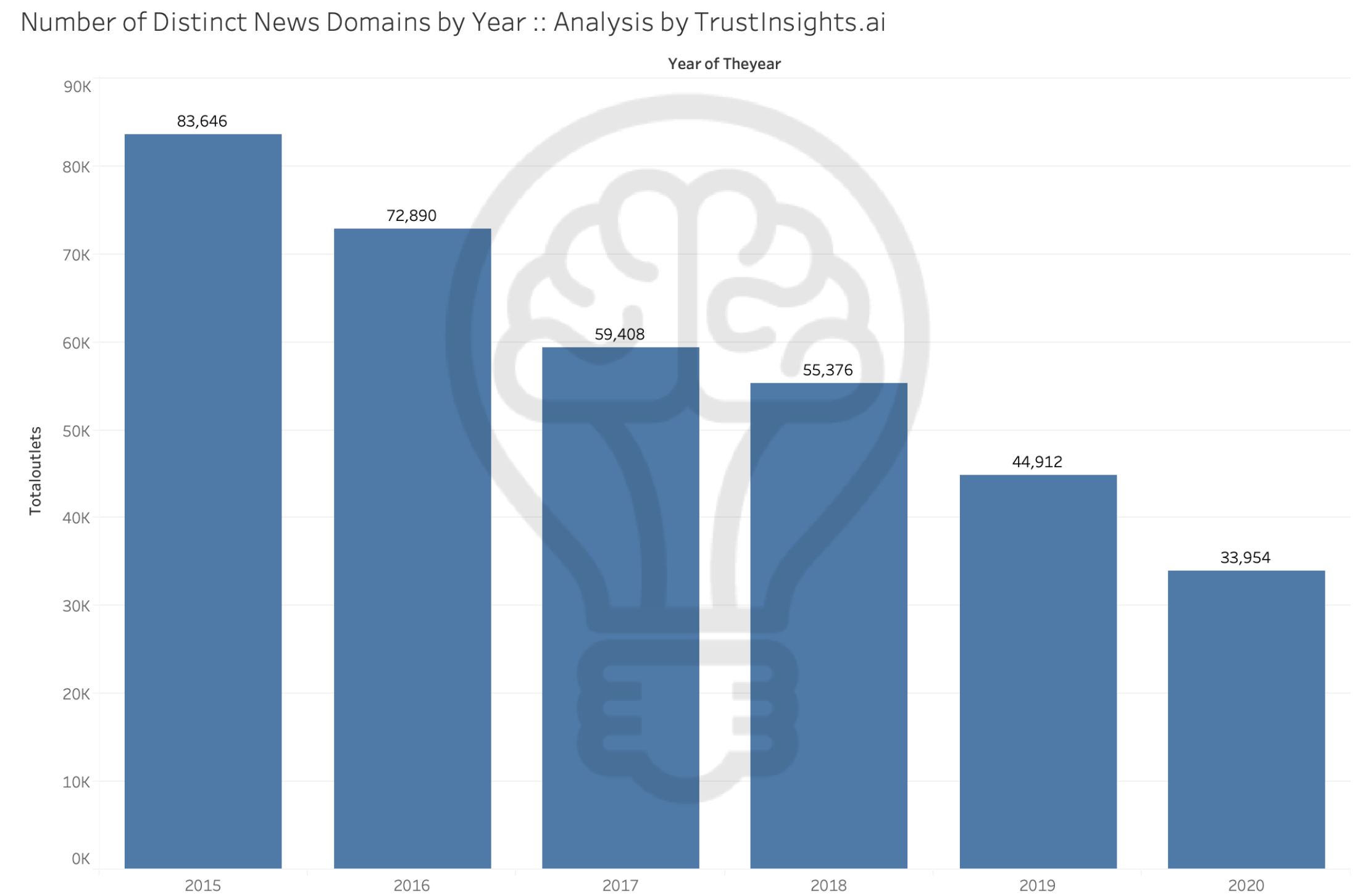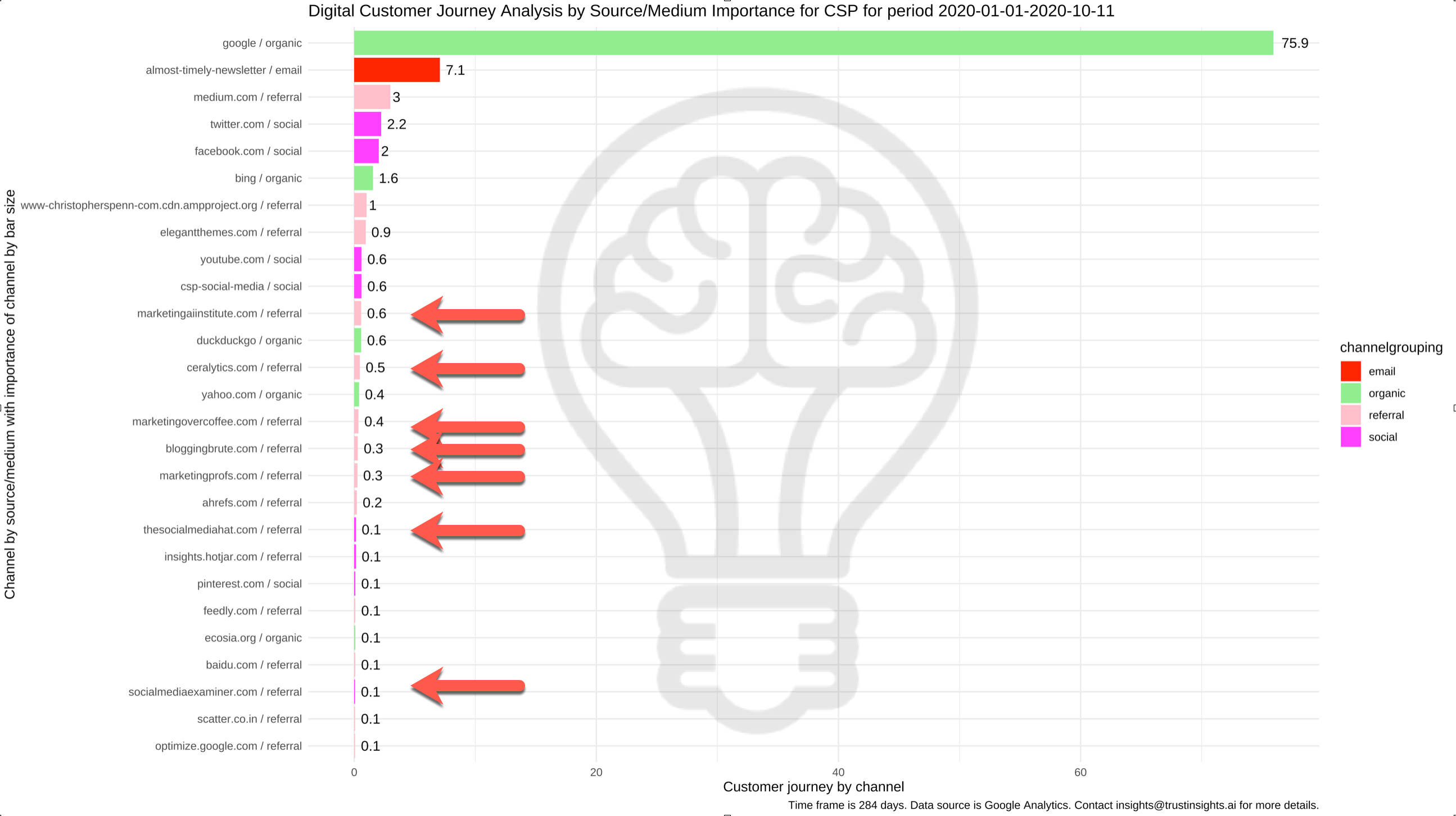One of the common refrains in the public relations industry is that PR is getting harder because there are fewer publications to pitch. Is this actually true?
How would we know? We know, of course, that large-scale closings have been tracked by organizations like The Poynter Institute, especially since the beginning of the pandemic. But these are typically one-off outlets, and don’t show the overall change in the industry.
What The Data Reveals
To determine the scale of change, we’ll look to the Google News Initiative and the major project they sponsor, the GDELT Project. GDELT’s massive database incorporates content from Google News, BBC Monitoring, LexisNexis, and many more datafeeds. Critically, it contains URLs to every news story in its database.
To make the determination of media change, let’s look at the GDELT database by year from 2015 and count the number of distinct, unique domain names (i.e. NYTimes.com, WashingtonPost.com, etc.) available each year:

(GDELT Data)
What we see is painfully clear: the number of overall independent domain names has declined sharply since 2015. There are 59.4% fewer total news domain names tracked by the GDELT Project today than there were 5 years ago. GDELT is global, so these statistics are planet-wide.
Newsroom employment has also declined; Pew Research cites United States Bureau of Labor Statistics data which indicates newsrooms have dropped 29% in the last 10 years, while newspapers specifically have dropped 51% in the last 10 years.
What This Means for Public Relations
The implications are stark: fewer publications means fewer traditional PR opportunities, which means any individual pitch is harder to land. The journalists who remain employed have far more pitches on their desks than they used to - if your pitches even make it to their desks at all.
Where do laid-off journalists go to work? While we don’t have concrete data, a quick scan of the many blog posts and news articles giving advice to laid-off journalists suggests that they go into brand journalism - either working at a brand’s publications, or working in public relations agencies. That means not only are there fewer journalists working in traditional publications, there are also more former journalists now competing with existing PR professionals for the same dwindling news inventory.
What Should You Do About It?
You can solve for this problem in a couple of ways.
First, if your brand doesn’t have its own publication of some kind - a blog, an email newsletter, etc. - now is the time to sink considerable resources into a publication you own and control. Direct, disintermediated reach to your audience is almost priceless today, and there’s no one you need to pitch to have your stories placed. You just have to have stories and content worth reading.
Second, while traditional newsrooms are dying, the total amount of media available to you is greater than ever. If you haven’t already learned social media marketing and especially influencer marketing, devote energy and resources towards doing so. A single influencer may have greater reach and sway with your audience than an entire hundred-year-old publication.
Third, examine your data for what’s still working. A properly set-up Google Analytics account can yield powerful insights about which external media properties still drive audiences to you. Combined with attribution analysis and branded search data, you can make investments in outreach and sponsorship to media outlets who drive real business outcomes. In this example, we identify the publications at a domain level who drive digital marketing conversions:
Click to view larger image.
While traditional journalism has fallen on hard times, the most agile public relations professionals are pivoting to the new media landscape and leveraging the power of data to do so. Success as a PR professional is no longer just about who you know, it’s now about what you know, too.
 Christopher Penn is co-founder and Chief Data Scientist of TrustInsights.ai, a marketing analytics consulting firm that helps companies solve their marketing data mysteries and get their analytics and insights in shape.
Christopher Penn is co-founder and Chief Data Scientist of TrustInsights.ai, a marketing analytics consulting firm that helps companies solve their marketing data mysteries and get their analytics and insights in shape.
Get the latest PR, IR, Marketing and Media tips on the Business Wire Blog. Subscribe today!






